Junkyard Gem: 1954 Plymouth Savoy Sedan

American car shoppers bought many millions of the four-door sedans that flew off Detroit’s assembly lines in the decade after World War II, and so plenty of them still remain in barns, garages, driveways and yards today, awaiting loving owners who will put them back on the road. Unfortunately, those with the time and money to take on challenging vintage automotive projects tend to prefer coupes and convertibles, especially those made by the higher-prestige marques. That means that many of these cars continue to run out of time with each passing day, taking that final tow-truck ride to their very last parking spaces. Today’s Junkyard Gem is one of those cars: a 1954 Plymouth Savoy four-door painted in Piedmont Maroon, found in a Denver self-service yard recently.
As an example of how many of these cars still get crushed each year, here’s a partial list of some of the 1946-1956 American four-door sedans I’ve personally documented in car graveyards over the last decade or so: 1947 Dodge Custom, 1947 Frazer Manhattan, 1948 Plymouth Special Deluxe, 1949 Dodge Coronet, 1949 Kaiser Special, 1949 Oldsmobile 88, 1949 Plymouth Special Deluxe, 1950 Cadillac Sixty-One, 1950 Chrysler Royal, 1950 Studebaker Commander, 1951 Chevrolet Styleline, 1951 Frazer, 1951 Lincoln Cosmopolitan, 1951 Plymouth Cranbrook, another 1951 Plymouth Cranbrook, 1952 Kaiser, 1952 Buick Special, 1952 Mercury Custom, 1953 Packard Clipper, 1953 Plymouth Special, 1953 Pontiac Chieftain, 1955 Studebaker Commander, 1956 DeSoto Fireflite and a 1956 Mercury Montclair.
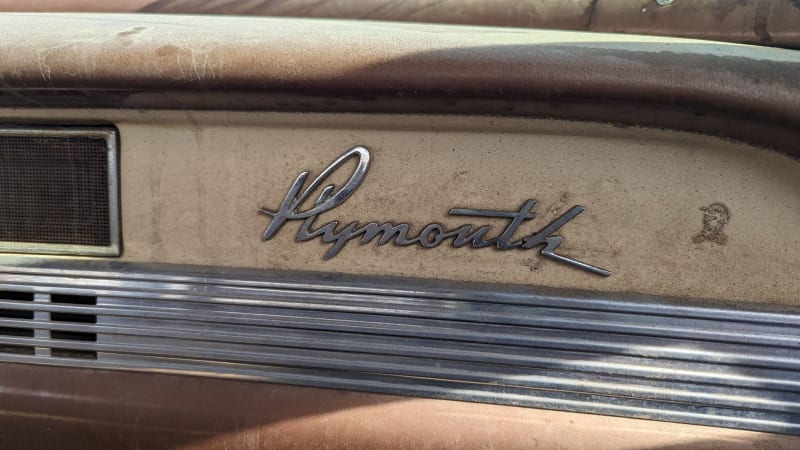
It’s especially tough for the 1946-1954 Plymouths, because those cars were seen as stodgy transportation appliances for cheapskates when they were new. As the 1940s became the 1950s, most American cars became longer, sleeker and flashier-looking, but Plymouths seemed to stay the same.
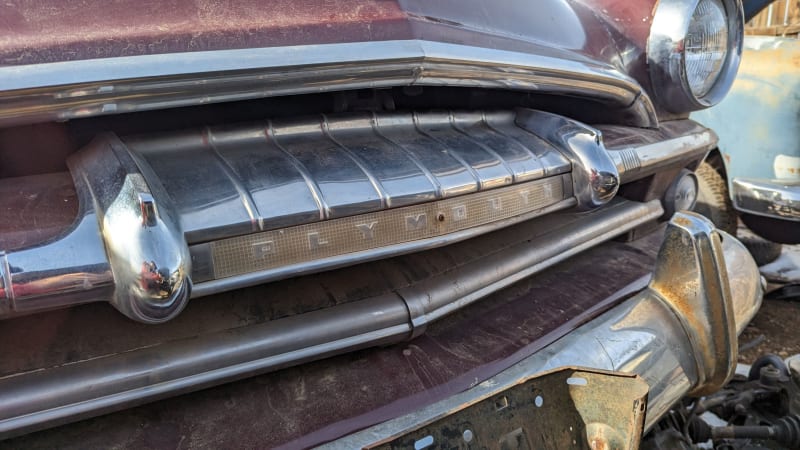
For the 1955 model year, Plymouths got a clean-sheet redesign and caught up with current styling trends well enough (probably not coincidentally, Plymouths finally got their own dealerships in late 1954, rather than just being sold out of Chrysler, DeSoto and Dodge showrooms). But for 1954, the best Chrysler could do with the looks of the increasingly aged-looking Plymouth was give it a new grille and some body chrome. Bumpers were made to stick out a few extra inches to cheat on the overall length a bit.
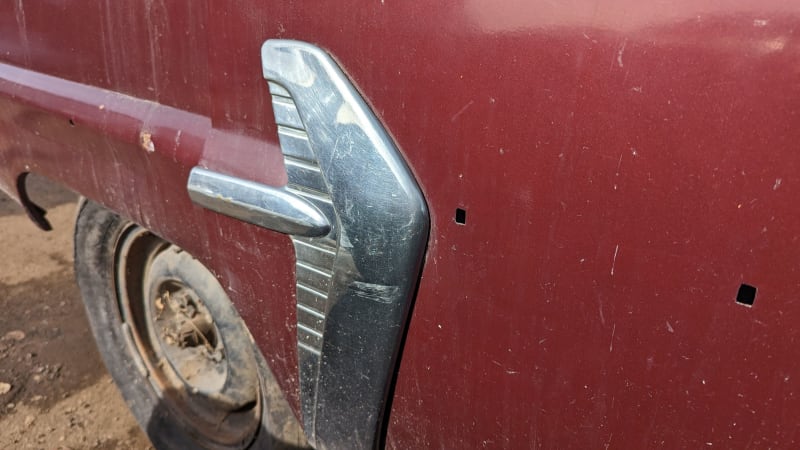
Chrysler’s Plymouth Division entered 1954 in third place for sales (behind first-place Chevrolet and second-place Ford) and had dropped to fifth by the end of the year, thanks to Buick and Oldsmobile grabbing the third and fourth spots, respectively.
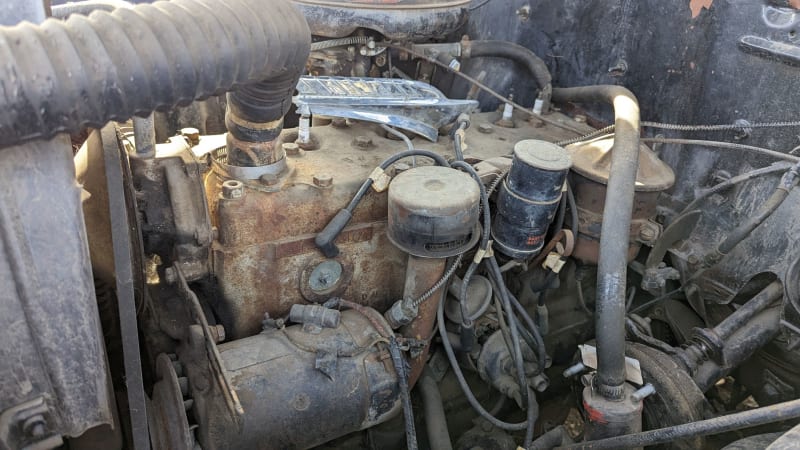
Things looked very old-fashioned under the ’54 Plymouth’s hood. This is a Chrysler flathead straight-six, a simple and reliable engine with ancestry stretching back to the 1920s; if this one is this car’s original plant, it’s a 217- or 230-cubic-incher rated at 100 or 110 horsepower. While Chrysler began building cars with modern overhead-valve V8s as early as the 1951 model year, it wasn’t until the Slant-6 debuted for 1959 that the old flathead was retired from cars (though it soldiered on, literally, in military trucks for many additional years).
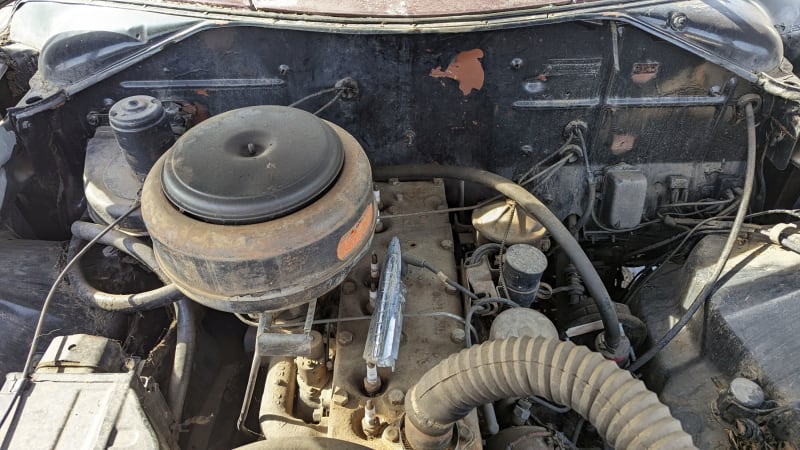
Plenty of new American cars still had flathead engines in 1954, of course; you could buy a new American car with a valve-in-block engine design all the way through 1964. However, valve-in-head designs were shoving the old flatheads aside in a hurry by the middle 1950s. Ford introduced an overhead valve straight-six for 1952 and a pushrod-equipped V8 for 1954. Chevrolets had overhead valves in their sixes going all the way back to 1929, and we all know what happened in the Chevrolet engine world in 1955.
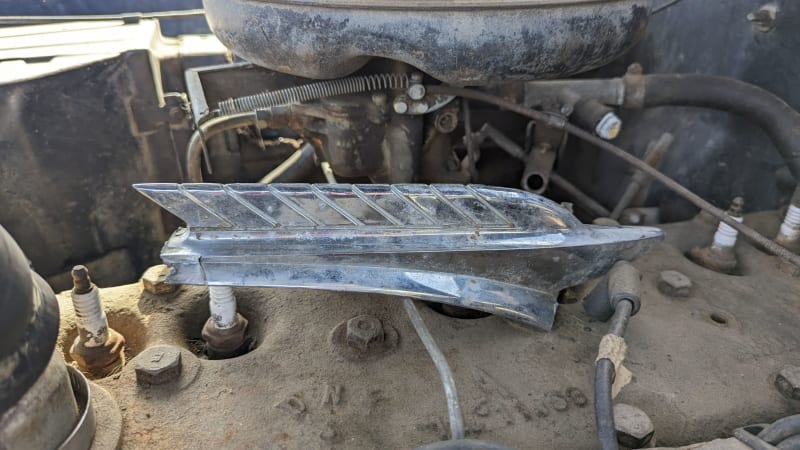
Even the Plymouth sailing-ship hood ornament (placed atop the engine by a junkyard shopper) seemed old-fashioned in 1954. Though Plymouth had been named after a brand of twine popular with American farmers, the ship theme was an attempt to connect the brand with Plymouth Rock and the Mayflower.
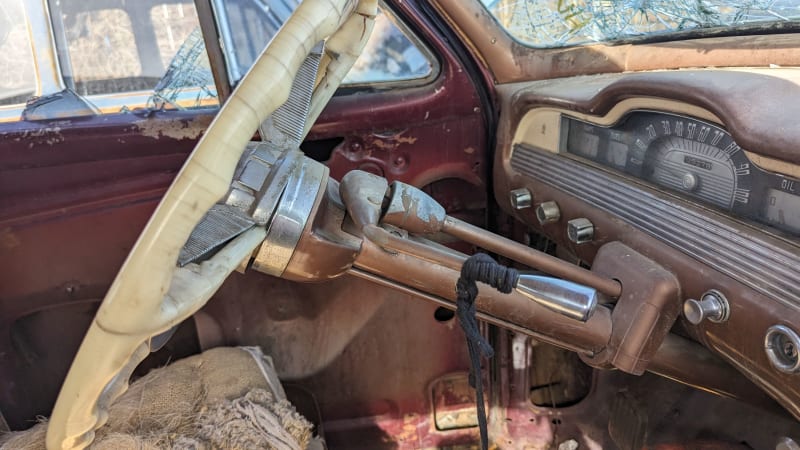
Plymouths did get an optional fully automatic transmission for 1954, though this car has the three-speed column-shift manual that went into most Detroit machines at the time.
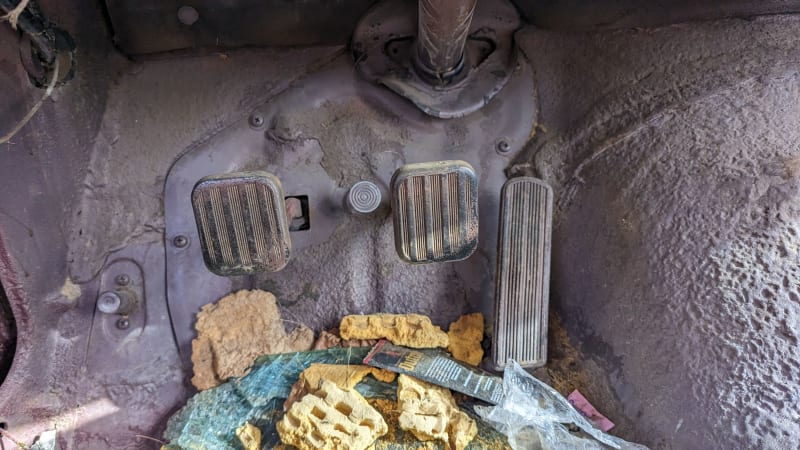
The 1954 Plymouth could be purchased with an optional Hy-Drive semi-automatic transmission as well as the base three-on-the-tree or two-speed PowerFlite automatic. With the Hy-Drive, you got a clutch pedal, the use of which was only necessary for starting out from a dead stop. Once underway, you could shift between forward gear ranges without touching the clutch.
Even though this car doesn’t have Hy-Drive, this advertisement is worth a watch.
While we’re at it, here’s how Chrysler’s Dodge Division pitched the PowerFlite a bit later.
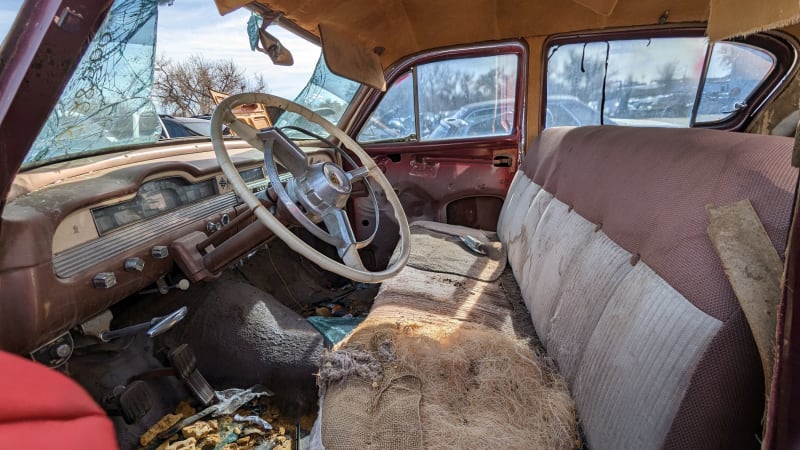
So this car was considered hopelessly behind the times when it was new, but that should make it even cooler to someone today who wants to work on and drive a vintage Detroit machine. The body on this ’54 is good and solid, with no rust-through that I could find, and the interior isn’t the nightmare of powdered horsehair and hantavirus-laden rodent poop that you see in so many High Plains cars left outdoors for decades. I think it spent most of the last few decades in a garage, awaiting a revival that never came.
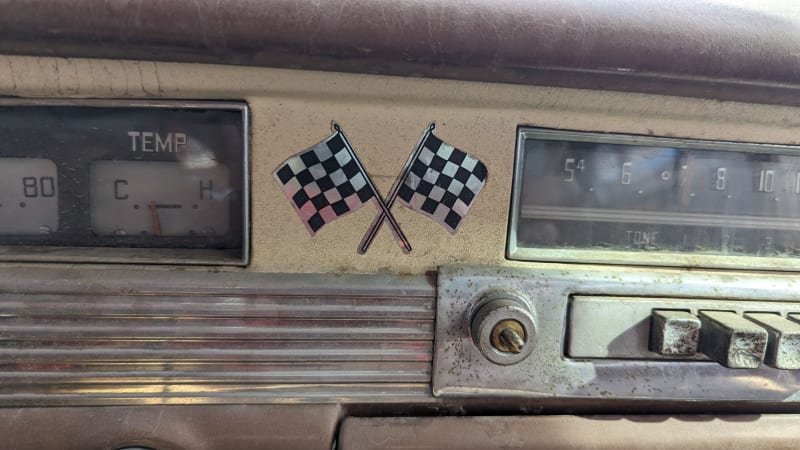
Someone loved this car and took care of it for at least the first few decades of its life. I’m guessing the checkered-flag decals date back to the early 1970s.
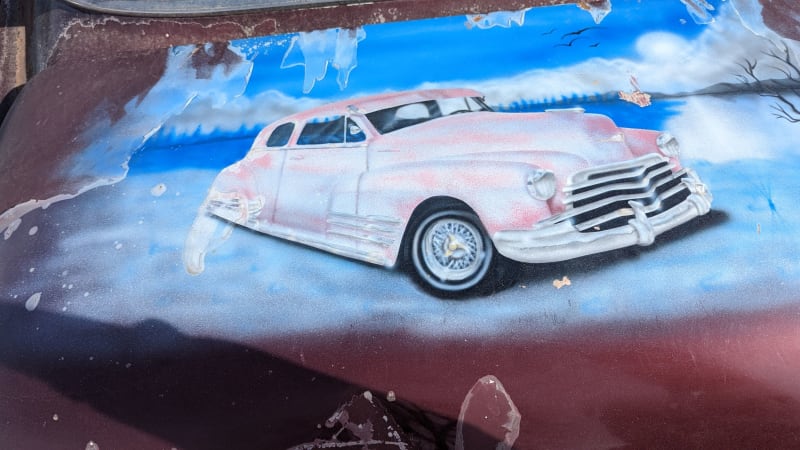
The part that really hurts is the airbrushed mural on the decklid. At first I thought the 1970s-Los Angeles-style lowrider depicted here with a chop job and Dayton wheels was an idealized representation of this ’54 as it would someday be in real life, but further examination shows that the illustration appears to be based on a mid-to-late-1940s Chrysler or maybe Pontiac. In any case, this car deserved a better fate.
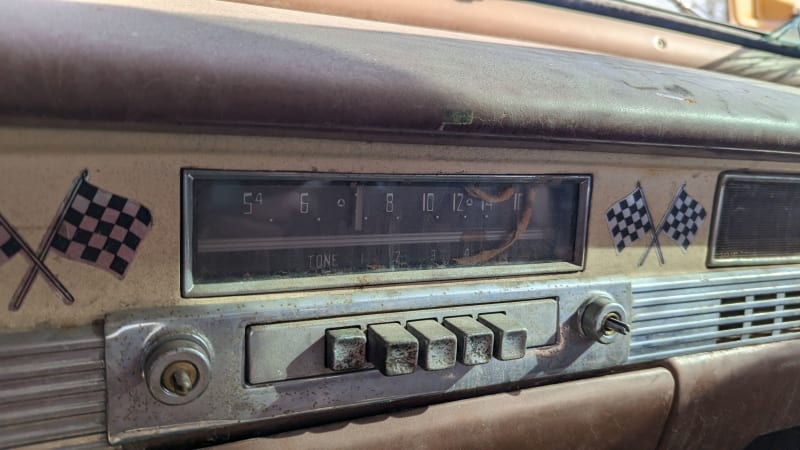
The original vacuum-tube radio (which had to warm up for a while before working) is still in the dash. The fact that nobody installed a more modern sound system implies that this car never got converted to a 12-volt electrical system (Plymouths had 6-volt electrics until 1956). Note the CONELRAD nuclear-attack triangle-in-a-circle symbols at 640 and 1240 kHz; 1953 was the first year for mandatory CONELRAD symbols in car radios, not coincidentally following the first test of a working fully thermonuclear weapon the year before. The infamous Castle Bravo H-bomb test was in the news when this car was brand-new.
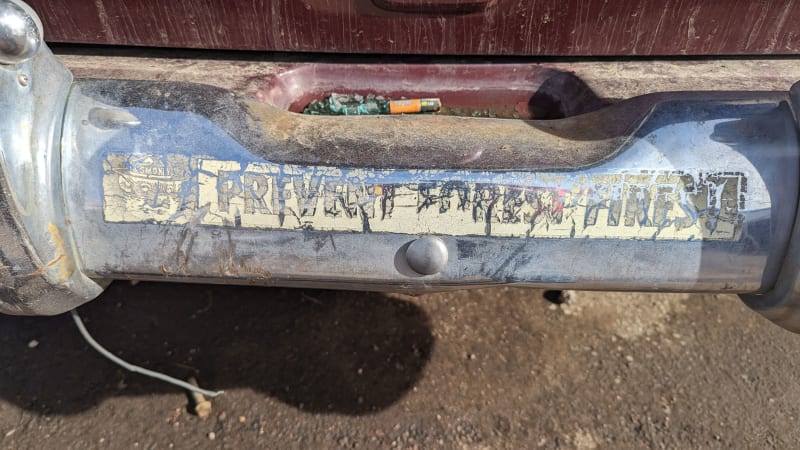
Smokey the Bear has a message for you.
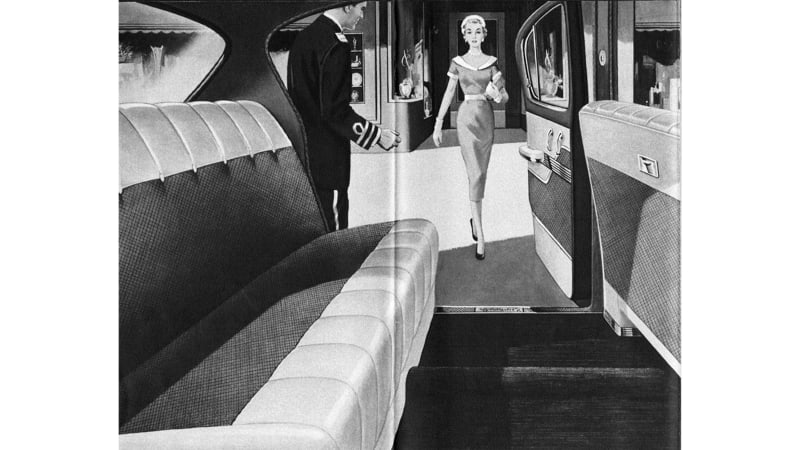
Try to imagine this car back in 1954, when the interior awaited a well-dressed lady after a visit to the jewelry store. In fact, the Savoy (which was the mid-grade Plymouth trim level for 1954) listed at just $1,853 for 1954, which amounts to something like $20,555 in 2023 dollars. That’s a lot of car for the dough!
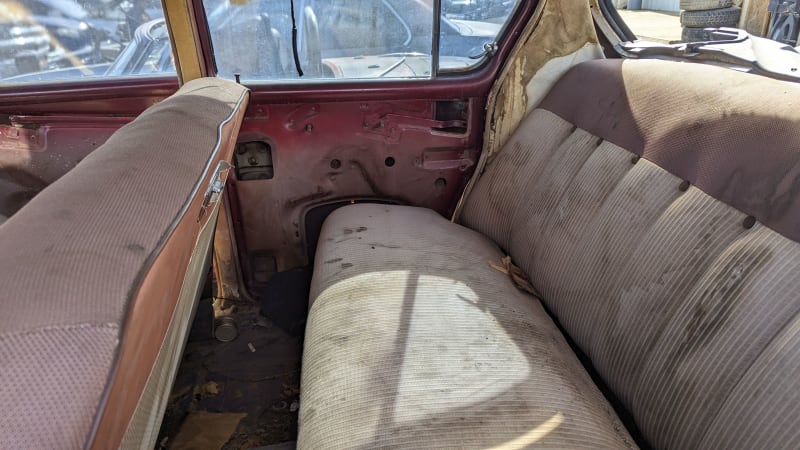
These simple bench seats wouldn’t have cost so much to get re-stuffed and re-skinned, by the standards of such work.
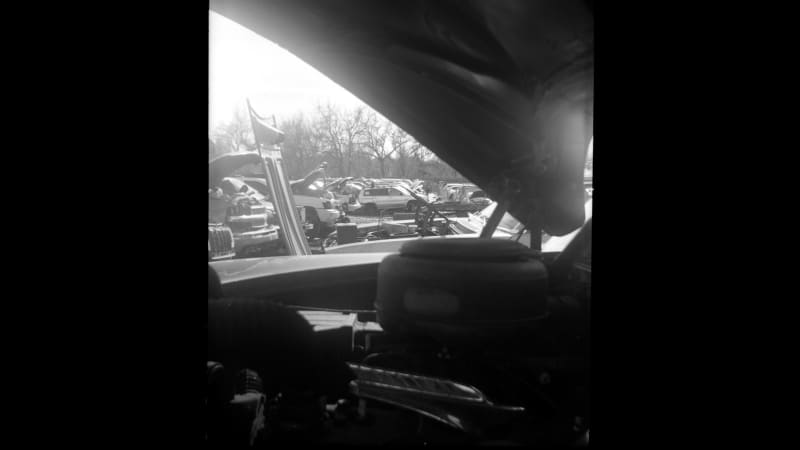
As I often do, I carried an old film camera with me on this boneyard visit. This photograph was taken with an Ansco Shur-Shot, a New York-made affordable box camera that would have been favored by the Plymouth-buying demographic in 1954.





